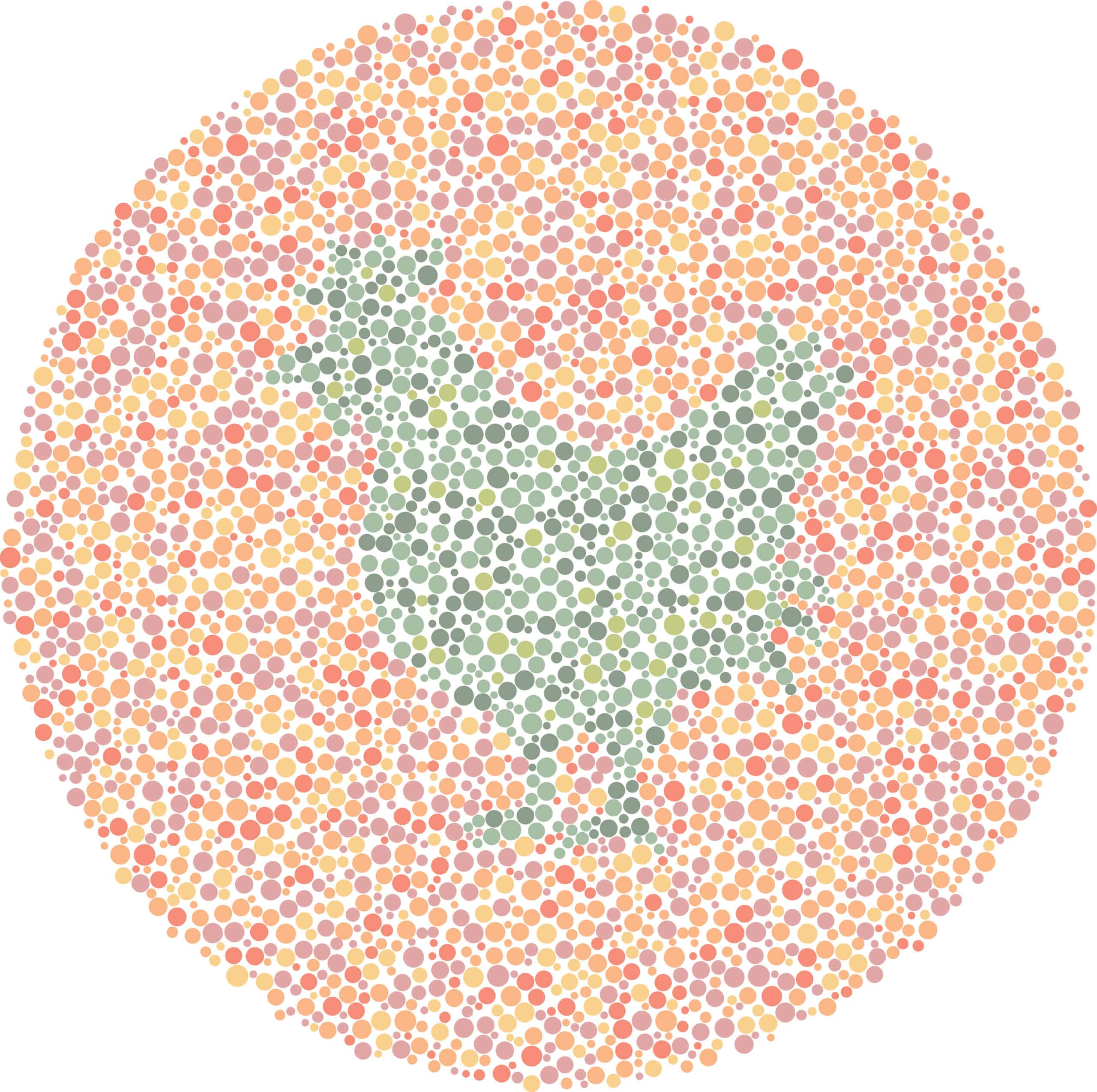
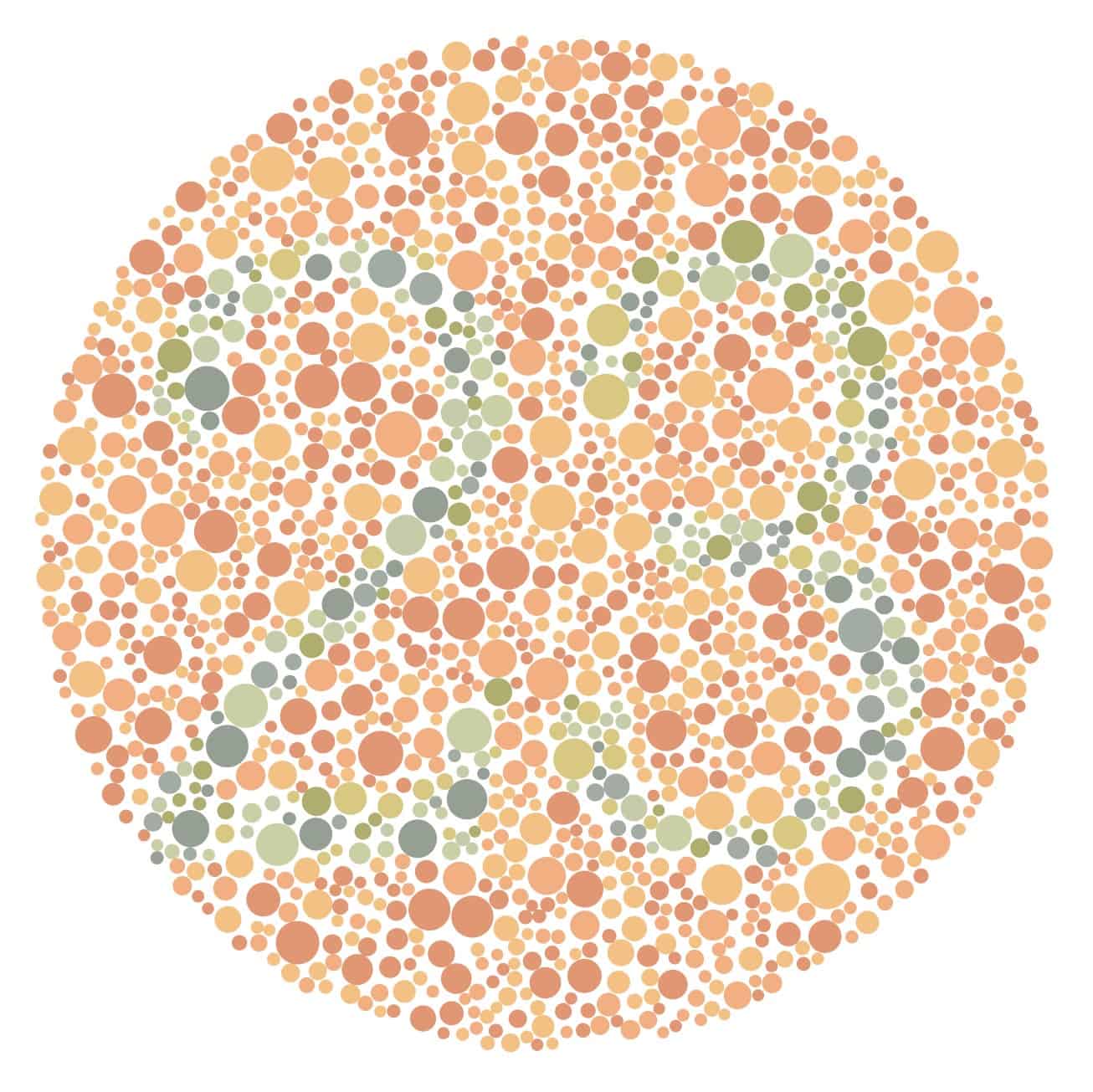
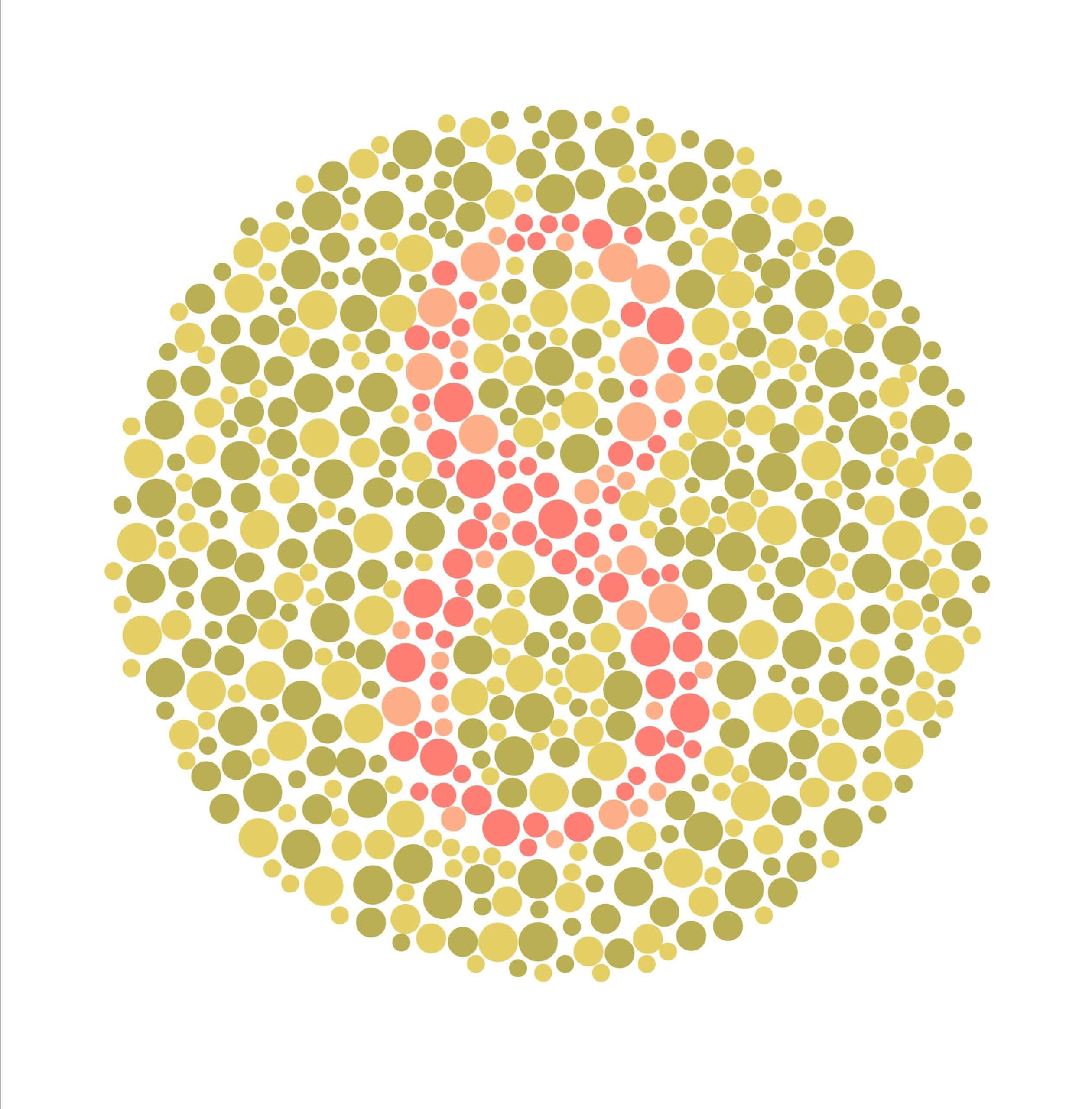
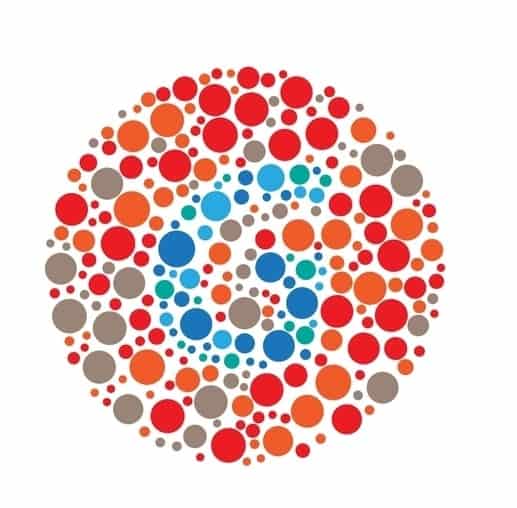
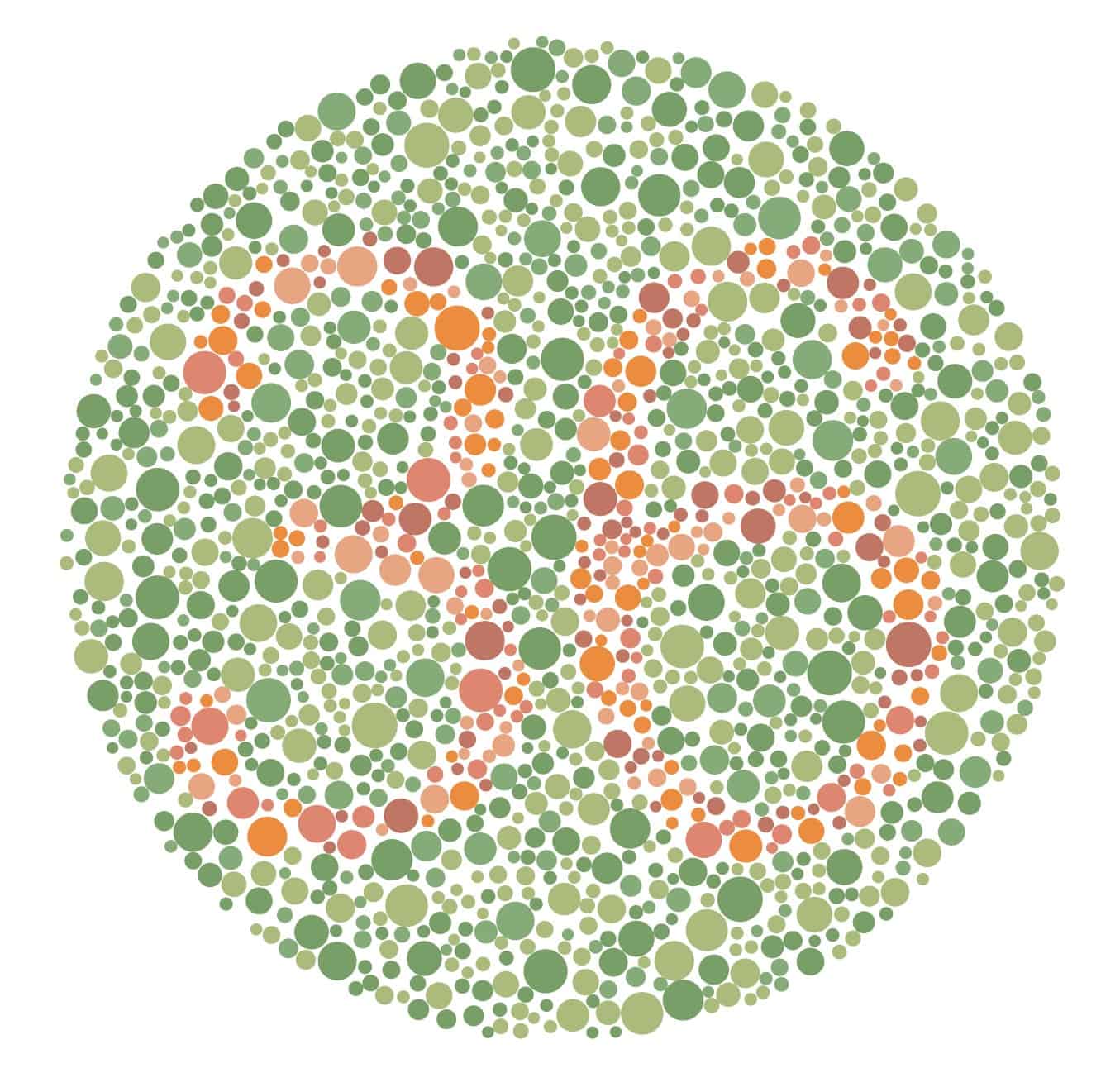
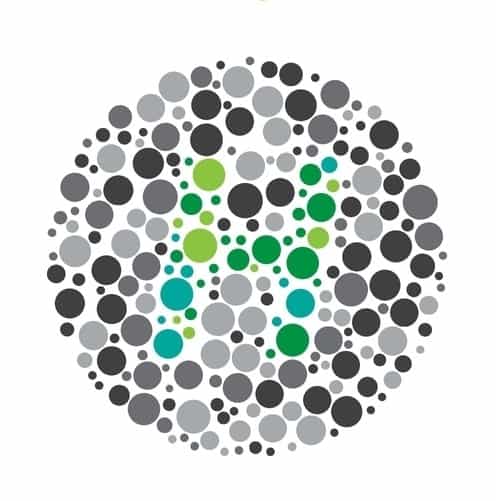
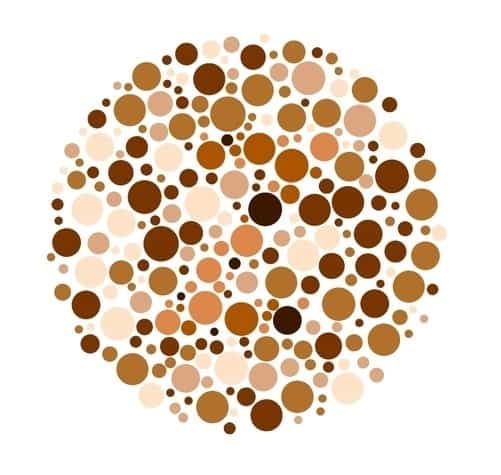
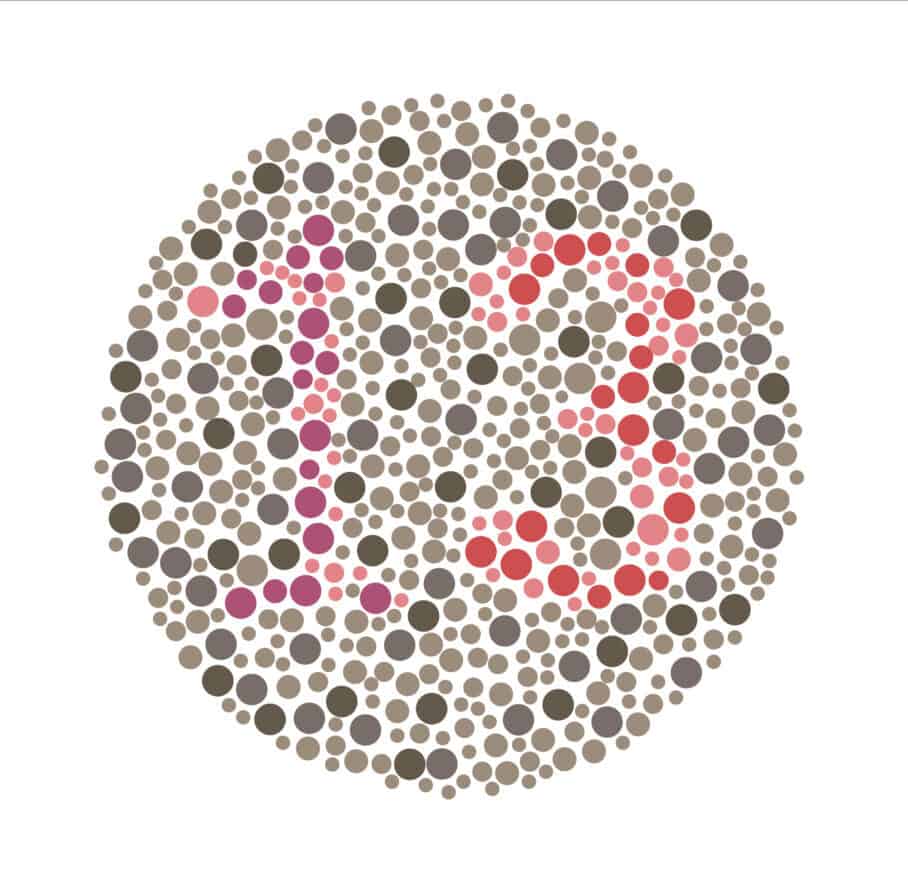
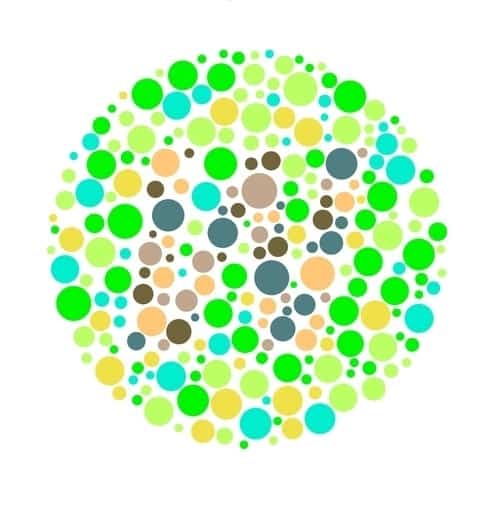
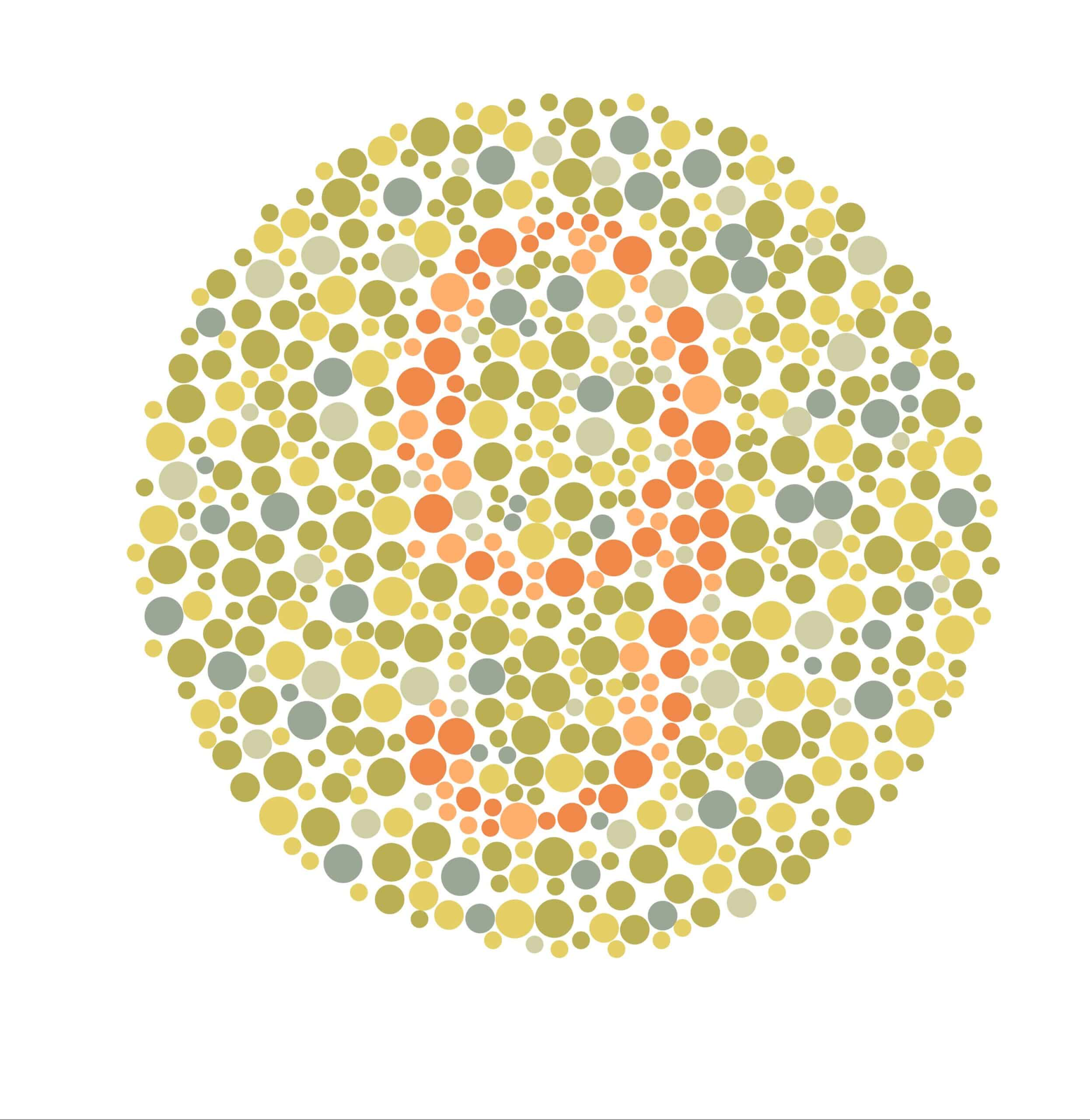
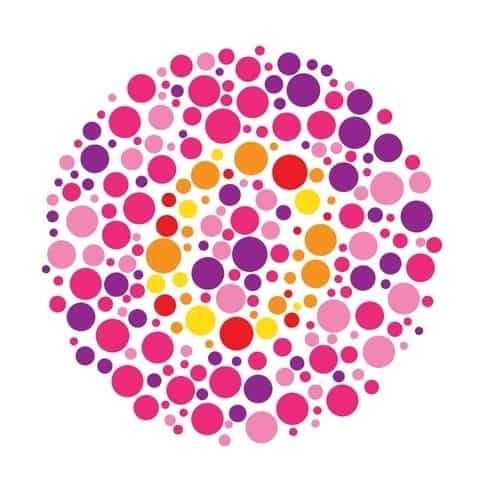
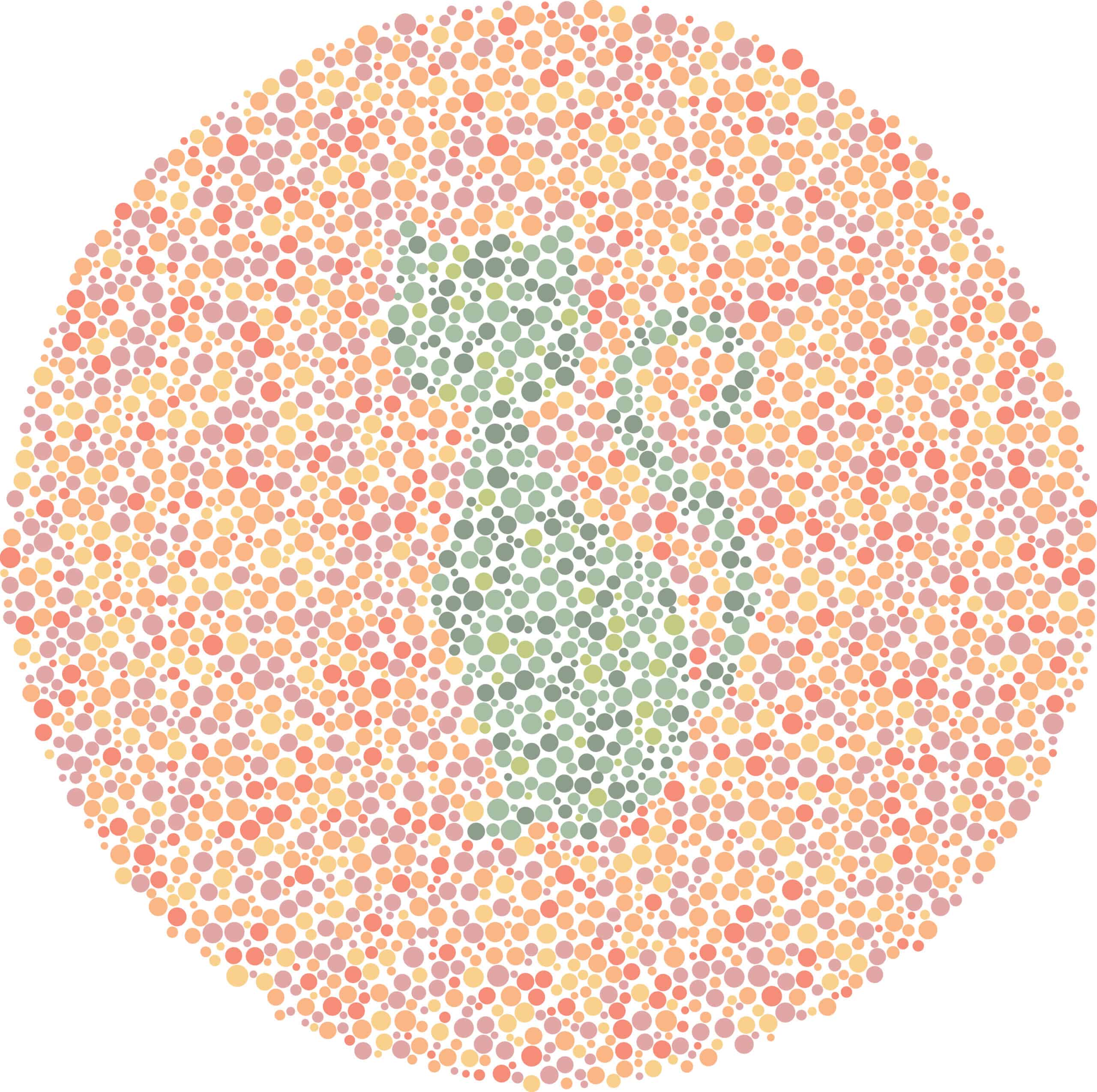
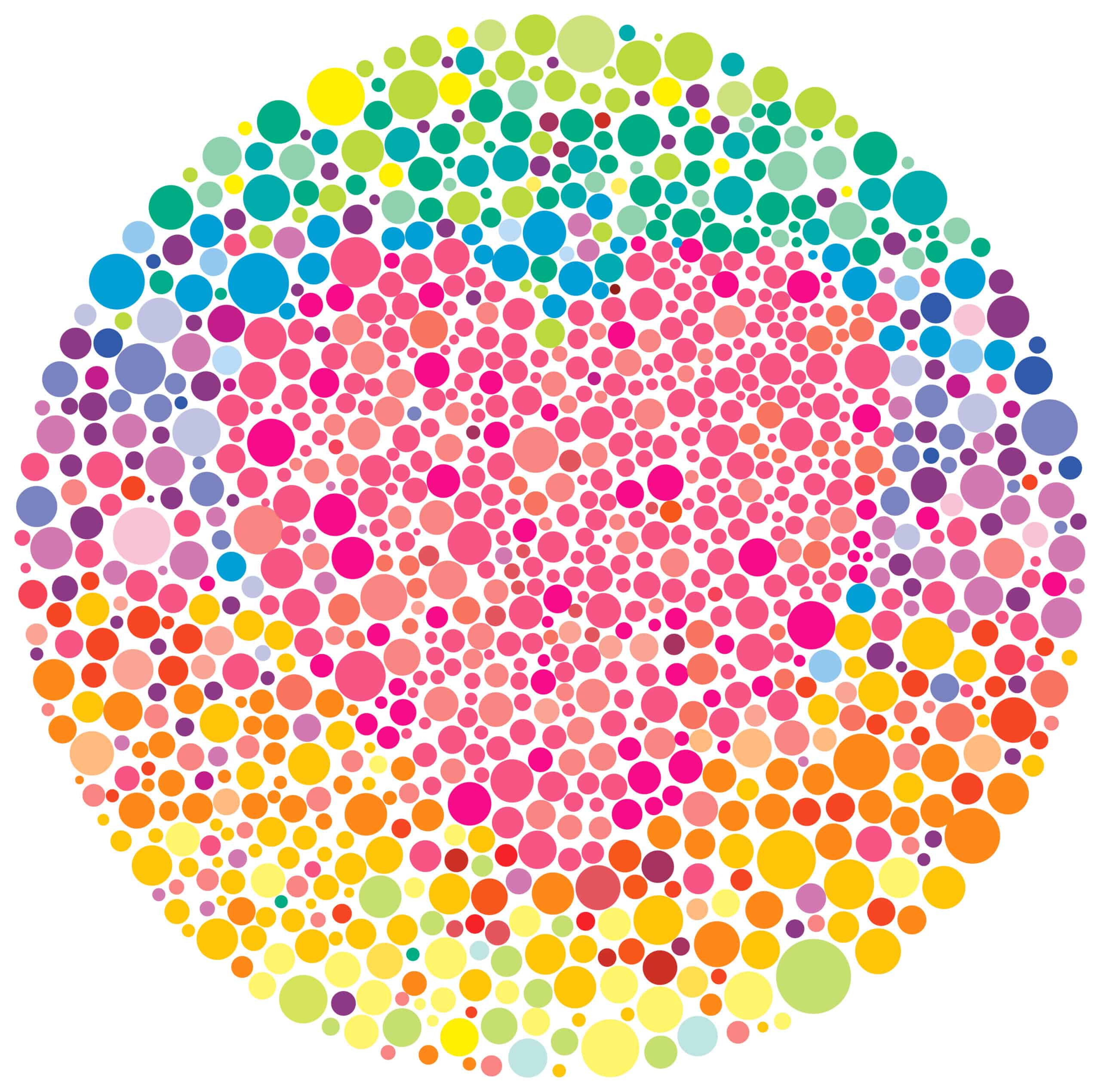
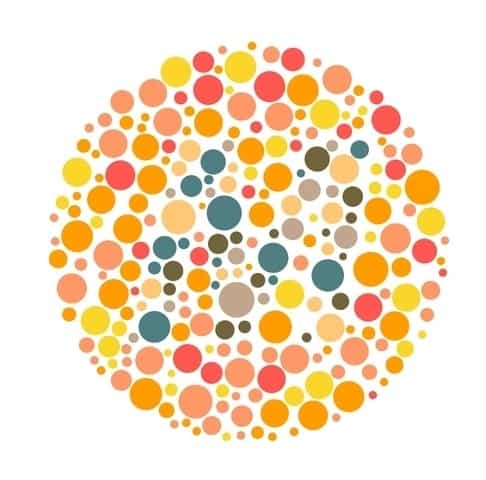
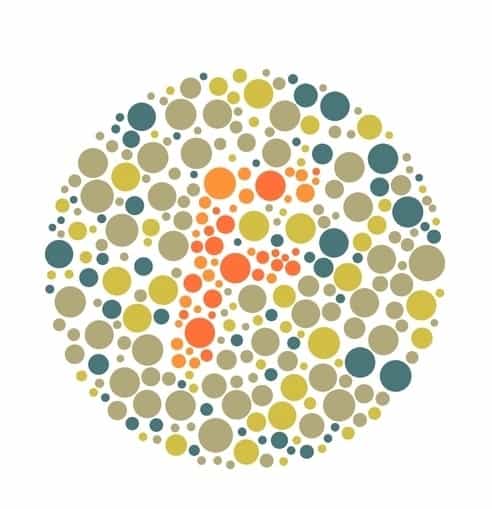
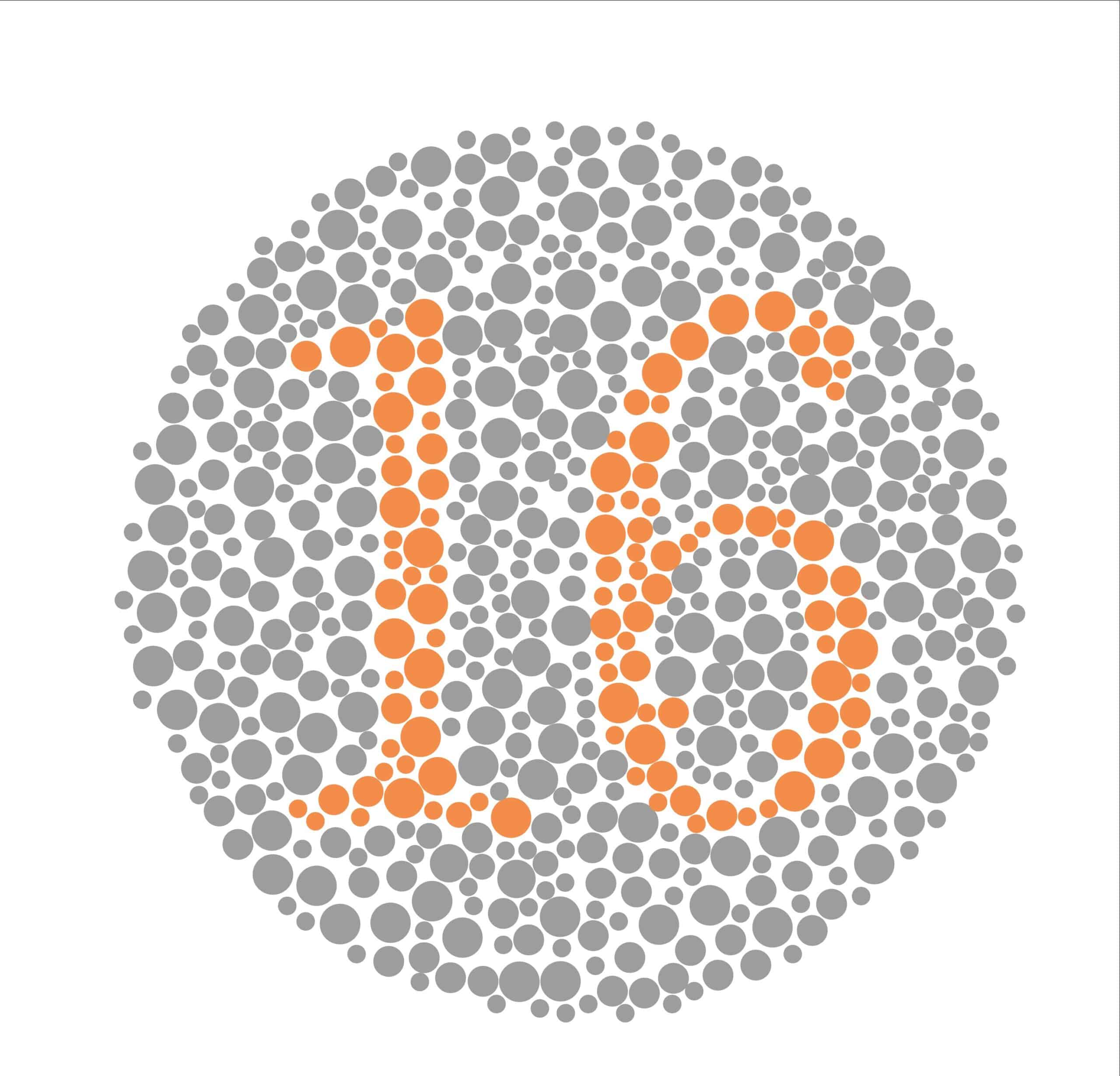
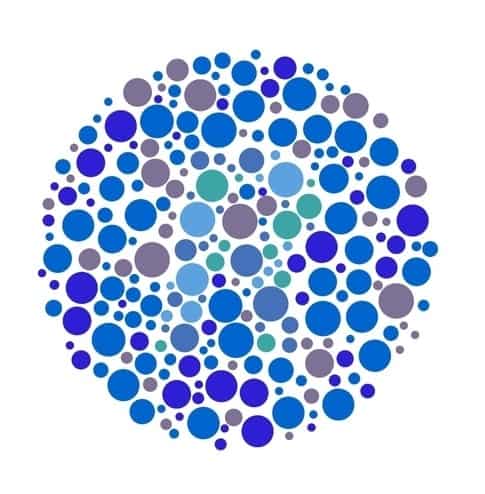
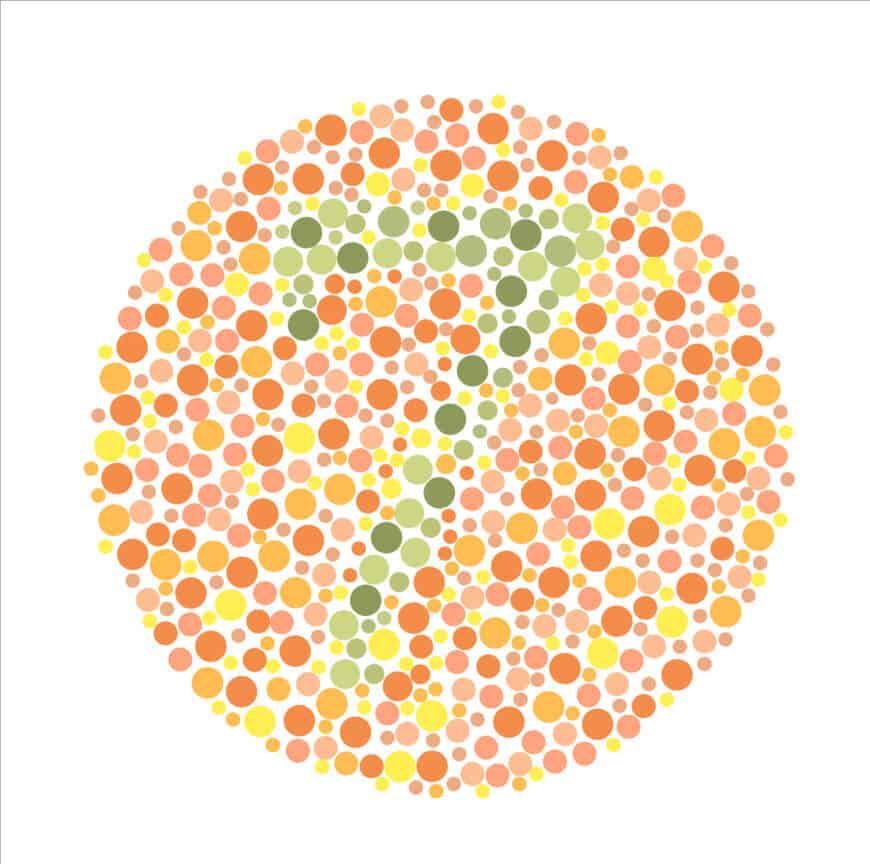
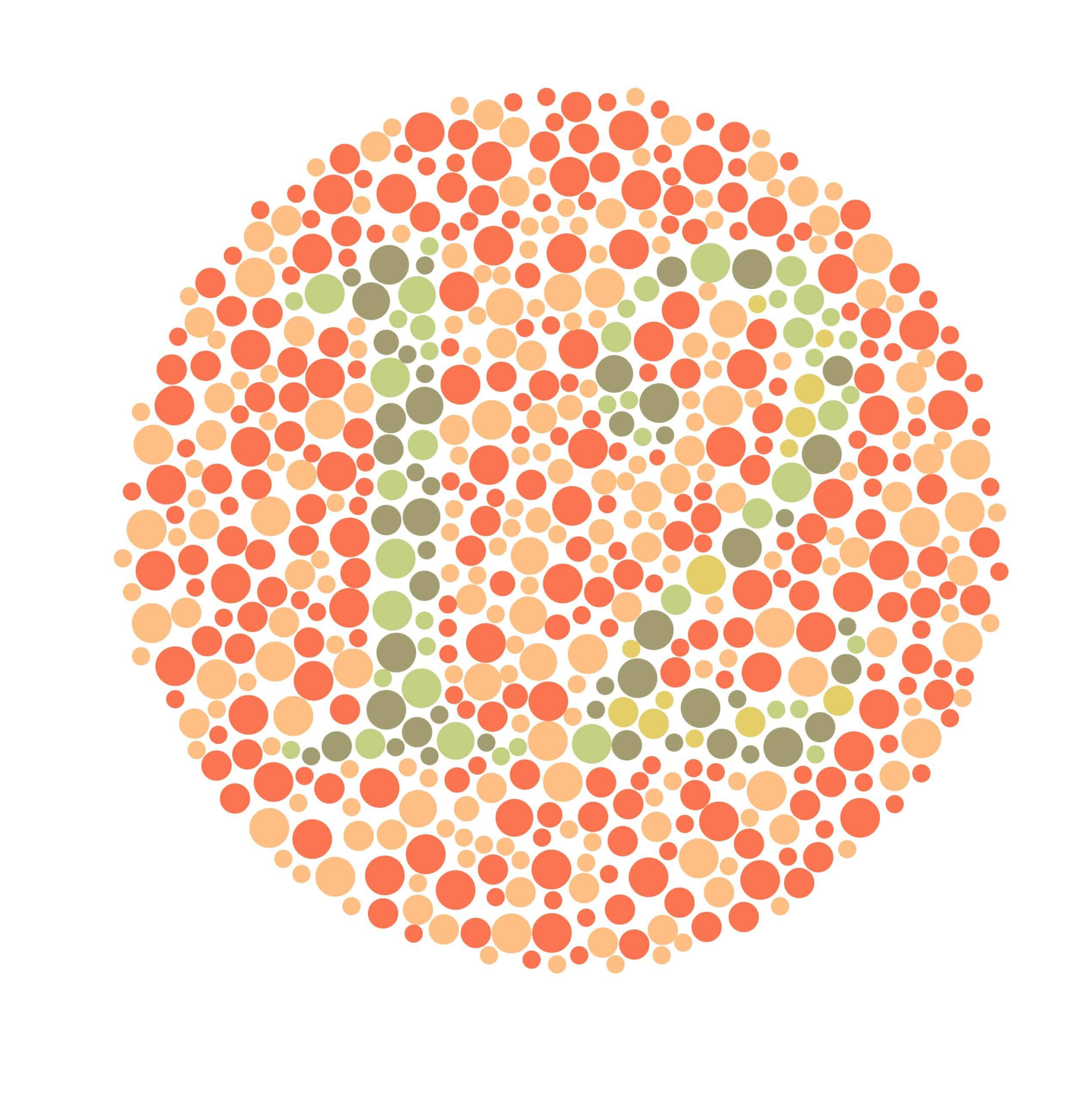
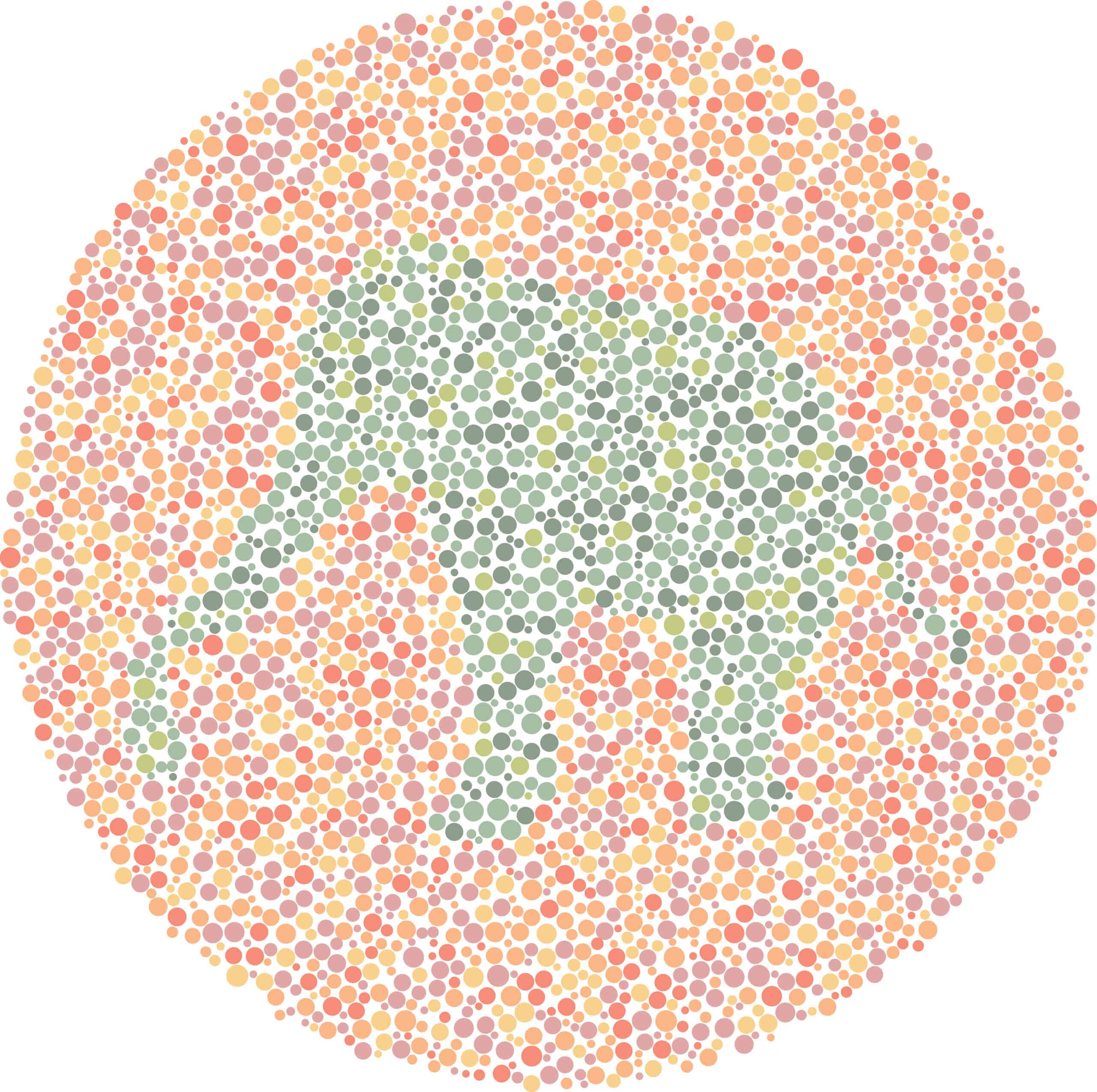
Hey everyone! Would you like to check if you have color blindness? This quiz will allow you to do just that. Twenty questions will help you decide if your eyes perceive colors properly. Let’s also talk a little about what color blindness is.
Color blindness (color vision deficiency) is the decreased ability to see color or differences in color. It can impair tasks such as selecting ripe fruit, choosing clothing, and reading traffic lights. Color blindness may make some educational activities more difficult. However, problems are generally minor, and most color-blind adapt. People with total color blindness (achromatopsia) may also be uncomfortable in bright environments and have decreased visual acuity.
The most common cause of color blindness is an inherited problem in the development of one or more of the three sets of the eyes’ cone cells, which sense color. Among humans, males are more likely to be color blind than females, because the genes responsible for the most common forms of color blindness are on the X chromosome. This genetic fault is passed on in what’s known as an X-linked inheritance pattern. Females have two X chromosomes, so a defect in one is typically compensated for by the other. Non-color-blind females can carry genes for color blindness and pass them on to their children. Males only have one X chromosome and therefore always express the genetic disorder if they have the recessive gene. Color blindness can also result from physical or chemical damage to the eye, the optic nerve, or parts of the brain. Diagnosis is typically with the Ishihara color test; other methods include genetic testing.
There is no cure for color blindness. Diagnosis may allow a person’s teacher to change the teaching method to accommodate the condition. Special lenses such as X-chrome lenses may help people with red-green color blindness in bright light. Mobile apps can help people identify colors.
Red-green color blindness is the most common form, followed by blue-yellow color blindness and total color blindness. Red-green color blindness affects up to 8% of males and 0.5% of females of Northern European descent, which means around 1 in 12 men and 1 in 200 women. The ability to see color also decreases in old age. In certain countries, color blindness may make people ineligible for certain jobs, such as those of aircraft pilots, train drivers, crane operators, and people in the armed forces. The effect of color blindness on artistic ability is controversial. The ability to draw appears to be unchanged, and several famous artists are believed to have been color blind.
In almost all cases, color blind people retain blue-yellow discrimination, and most color-blind individuals are anomalous trichromats rather than complete dichromats. In practice, this means that they often retain limited discrimination along the red-green axis of color space, although their ability to separate colors in this dimension is reduced. Color blindness very rarely refers to complete monochromatism.
Dichromats often confuse red and green items. For example, they may find it difficult to distinguish a Braeburn apple from a Granny Smith or red from the green of traffic lights without other clues — for example, shape or position. Dichromats tend to learn to use texture and shape clues and so may be able to penetrate camouflage that has been designed to deceive individuals with normal color vision.
The colors of traffic lights are confusing to some dichromats as there is an insufficient apparent difference between the red traffic lights and sodium street lamps; also, the green can be confused with a dirty white lamp. This is a risk on high-speed undulating roads where angular cues cannot be used. British Rail color lamp signals use more easily identifiable colors: the red is blood red, the amber is yellow and the green is a bluish color. Most British road traffic lights are mounted vertically on a black rectangle with a white border (forming a “sighting board”) and so dichromats can more easily look for the position of the light within the rectangle — top, middle, or bottom. In the eastern provinces of Canada horizontally mounted traffic lights are generally differentiated by shape to facilitate identification for those with color blindness: square for red, 45° tilted square for yellow, and circle for green. In the United States, this is not done by shape but by position, as the red light is always on the left if the light is horizontal, or on top, if the light is vertical. However, a lone flashing light (e.g. red for stop, yellow for caution) is still problematic.
Do you suspect you may be color-blind? Or maybe you have great eyesight and are you curious if you will be able to achieve the highest score in our quiz? Whatever the case may be, we invite you to answer twenty questions about distinguishing elements in pictures.